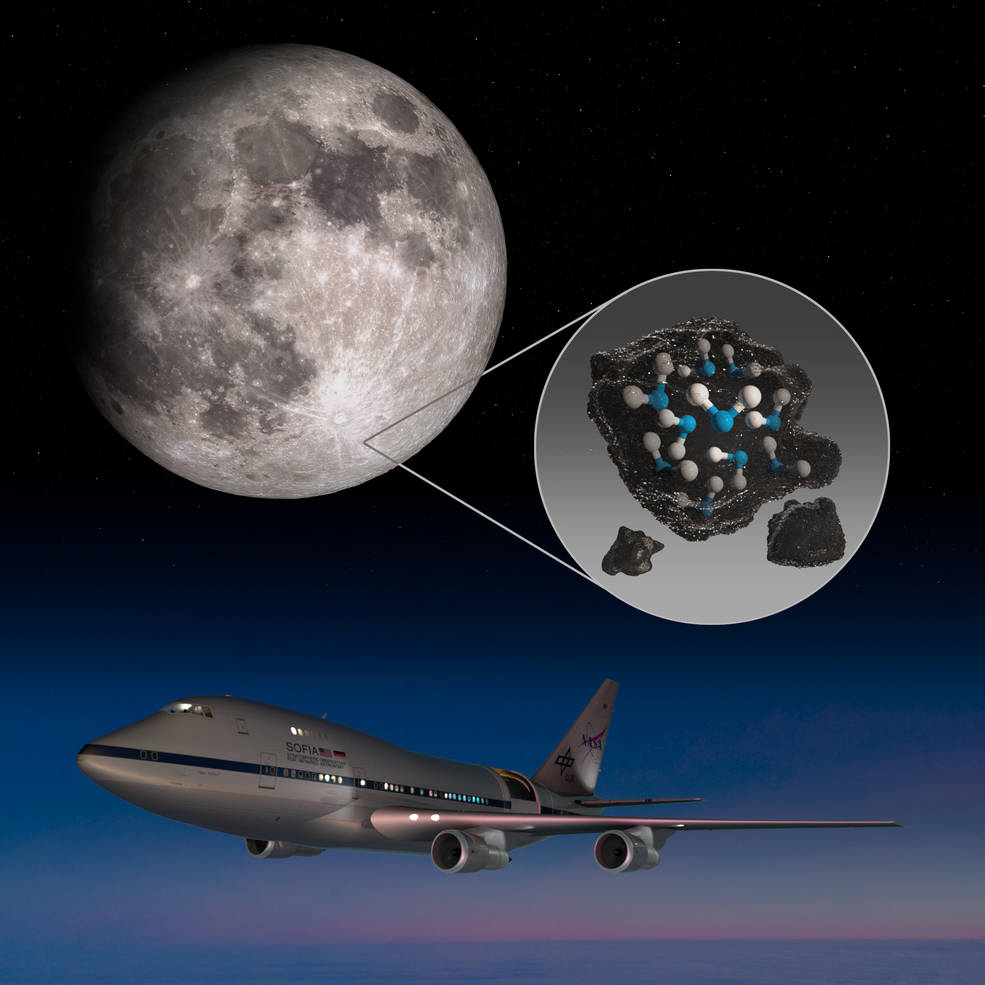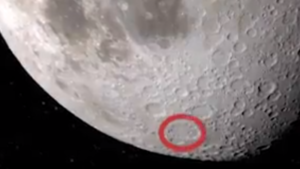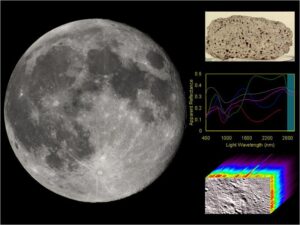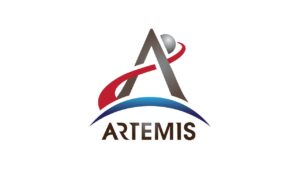
Image: NASA/Daniel Rutter
Today, researchers from NASA’s Stratospheric Observatory for Infrared Astronomy (SOFIA) confirmed for the first time that molecular water has been discovered on the sunlit surface of the moon, indicating “water may be distributed across the lunar surface, and not limited to cold, shadowed places.”
SOFIA, basically a telescope on an airplane, uses a specially modified Boeing 747 jumbo jet for research missions. Flying at altitudes of up to 45,000 feet, the aircraft uses its 106-inch diameter telescope to peer deep into the sky. By flying so high, SOFIA is above roughly 99% of the water vapor in Earth’s atmosphere which could distort the view into space. Using its Faint Object infraRed CAmera for the SOFIA Telescope (FORCAST), SOFIA was able to pick up the specific wavelength unique to water molecules, at 6.1 microns, and discovered a relatively surprising concentration in Clavius Crater. This crater is one of the larger craters visible from Earth in its lit, southern hemisphere.
“We had indications that H2O – the familiar water we know – might be present on the sunlit side of the Moon,” said Paul Hertz, director of the Astrophysics Division in the Science Mission Directorate at NASA Headquarters in Washington. “Now we know it is there. This discovery challenges our understanding of the lunar surface and raises intriguing questions about resources relevant for deep space exploration.”

“Prior to the SOFIA observations, we knew there was some kind of hydration,” said Casey Honniball, the lead author who published the results from her graduate thesis work at the University of Hawaii at Mānoa in Honolulu. “But we didn’t know how much, if any, was actually water molecules – like we drink every day – or something more like drain cleaner.”
“Without a thick atmosphere, water on the sunlit lunar surface should just be lost to space,” said Honniball, who is now a postdoctoral fellow at NASA’s Goddard Space Flight Center in Greenbelt, Maryland. “Yet somehow we’re seeing it. Something is generating the water, and something must be trapping it there.”
SOFIA’s results build on years of previous research examining the presence of water on the Moon. When the Apollo astronauts first returned from the Moon in 1969, it was thought to be completely dry. Orbital and impactor missions over the past 20 years, such as NASA’s Lunar Crater Observation and Sensing Satellite, confirmed ice in permanently shadowed craters around the Moon’s poles. Meanwhile, several spacecraft – including the Cassini mission and Deep Impact comet mission, as well as the Indian Space Research Organization’s Chandrayaan-1 mission – and NASA’s ground-based Infrared Telescope Facility, looked broadly across the lunar surface and found evidence of hydration in sunnier regions. Yet those missions were unable to definitively distinguish the form in which it was present – either H2O or OH.

The discovery of water on the sunlit side of the moon could prove to have a profound impact on human spaceflight to the Moon and beyond. In addition to be used as astronauts to support human life, water could also sustain farming endeavors in space, serve as a source of fuel for space travel, and more. However, whether the water SOFIA found is easily accessible for use as a resource remains to be determined.
In May of 2019, President Donald Trump announced his administration was making a $1.6 billion down-payment on crewed missions to the Moon. President Trump has set ambitious goals for NASA to send people back to the Moon and hopes to do so by the end of his second term, if re-elected. “Under my Administration, we are restoring NASA to greatness and we are going back to the Moon, then Mars,” President Trump said.
NASA says the name for this updated Moon mission will be “Artemis.” According to Greek mythology, Artemis was the daughter of Leto and Zeus, and the twin of Apollo. She is the goddess of the wilderness, the hunt and wild animals, and fertility; Artemis is also considered as one of the helpers of midwives as a goddess of birth. The original Moon landing project was known as the “Apollo Mission.”

NASA Administrator Jim Bridenstine says Artemis will bring not only men to the Moon, but women too. “We’re excited to be landing the first woman and next man on the surface of the Moon by 2024,” he said told reporters upon President Trump’s announcement of his administration’s push to return to the Moon.
Under NASA’s Artemis program, the agency is eager to learn all it can about the presence of water on the Moon in advance of sending the first woman and next man to the lunar surface in 2024 and establishing a sustainable human presence there by the end of the decade.
“Water is a valuable resource, for both scientific purposes and for use by our explorers,” said Jacob Bleacher, chief exploration scientist for NASA’s Human Exploration and Operations Mission Directorate. “If we can use the resources at the Moon, then we can carry less water and more equipment to help enable new scientific discoveries.”

SOFIA’s follow-up flights will look for water in additional sunlit locations and during different lunar phases to learn more about how the water is produced, stored, and moved across the Moon. The data will add to the work of future Moon missions, such as NASA’s Volatiles Investigating Polar Exploration Rover (VIPER), to create the first water resource maps of the Moon for future human space exploration.
SOFIA is a joint project of NASA and the German Aerospace Center. Ames manages the SOFIA program, science, and mission operations in cooperation with the Universities Space Research Association, headquartered in Columbia, Maryland, and the German SOFIA Institute at the University of Stuttgart. The aircraft is maintained and operated by NASA’s Armstrong Flight Research Center in Palmdale, California.
The research behind today’s announcement can be viewed online; the scientific journal “Nature Astronomy” published the report online here: https://www.nature.com/articles/s41550-020-01222-x.